The emergence of SARS-CoV-2 and the COVID-19 pandemic
Trevor Bedford (@trvrb)
Associate Professor
Fred Hutch, Seattle, WA
22 Apr 2020
Genomic overview of the COVID-19 pandemic, using sequencing to reconstruct SARS-CoV-2 evolution and spread
Epidemic process
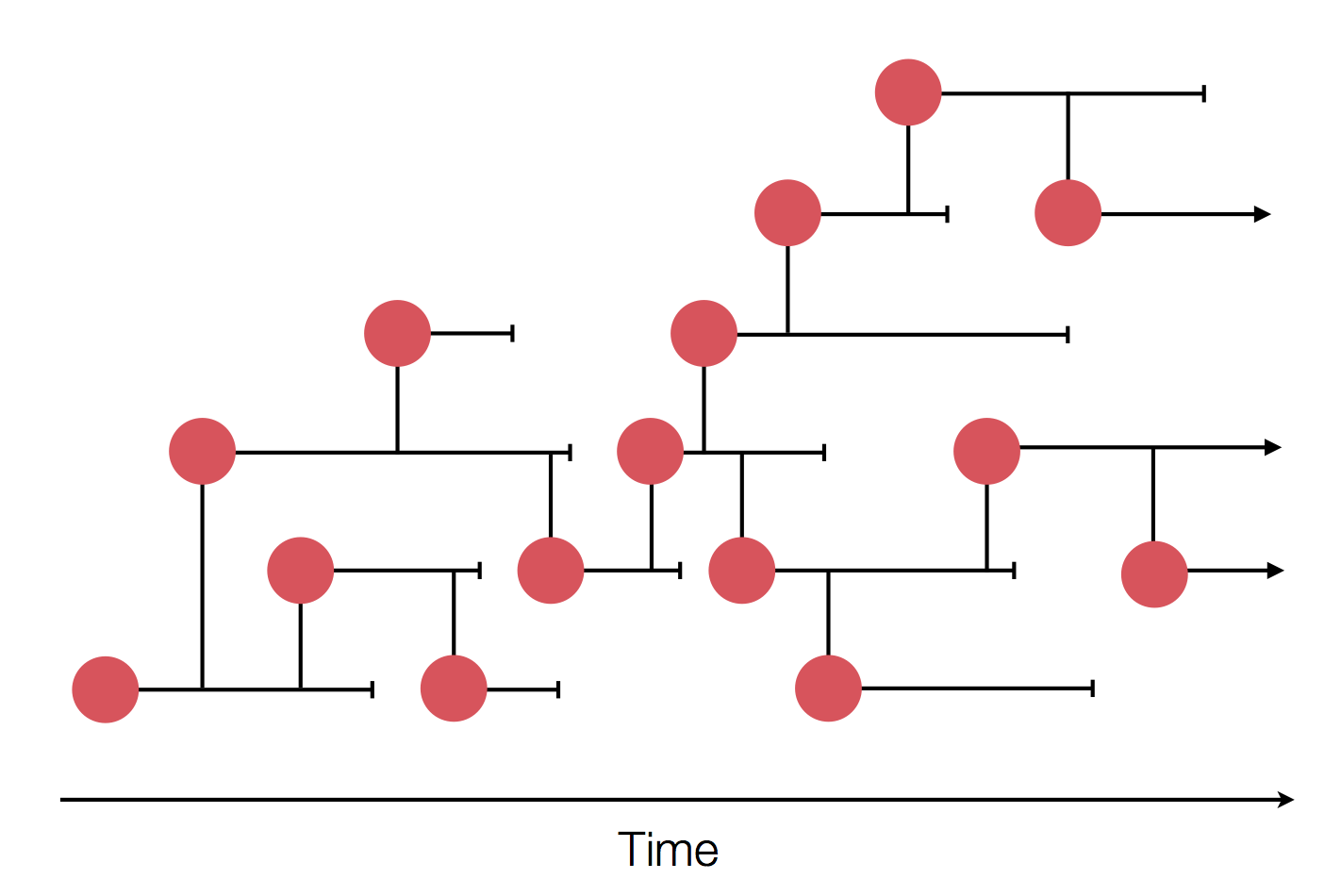
Sample some individuals

Sequence and determine phylogeny
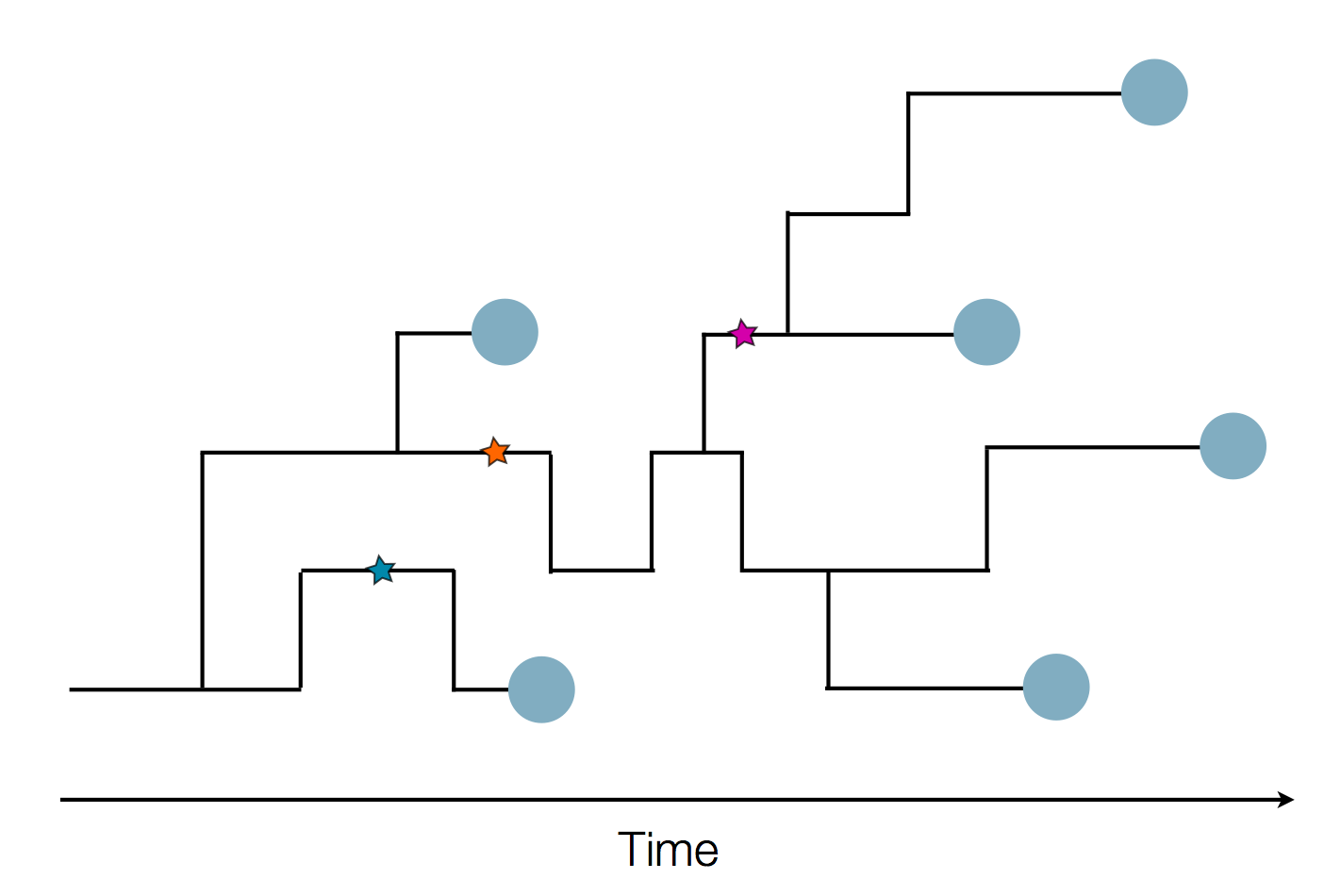
Sequence and determine phylogeny

Nextstrain
We've been tracking SARS-CoV-2 since Jan 10 on nextstrain.org, where we continually pull in latest genomic data to analyze evolution and spread
with
![]() Richard Neher,
Richard Neher,
![]() James Hadfield,
James Hadfield,
![]() Emma Hodcroft,
Emma Hodcroft,
![]() Thomas Sibley,
Thomas Sibley,
![]() John Huddleston,
John Huddleston,
![]() Louise Moncla,
Louise Moncla,
![]() Cassia Wagner,
Cassia Wagner,
![]() Miguel Paredes,
Miguel Paredes,
![]() Misja Ilcisin,
Misja Ilcisin,
![]() Kairsten Fay,
Kairsten Fay,
![]() Jover Lee,
Jover Lee,
![]() Allison Black,
Allison Black,
![]() Colin Megill,
Colin Megill,
![]() Sidney Bell,
Sidney Bell,
![]() Barney Potter,
Barney Potter,
![]() Charlton Callender
Charlton Callender
Current data flow for SARS-CoV-2
- Labs contribute directly to GISAID
- Nextstrain pulls a complete dataset (~10k complete genomes) from GISAID every 60 minutes
- This triggers an automatic rebuild on Amazon Web Services
- We inspect and manually update new lat/longs, etc...
- We push this build online to nextstrain.org and tweet the update from @nextstrain
Dec/Jan: Emergence of SARS-CoV-2 from Wuhan in ~Nov 2019
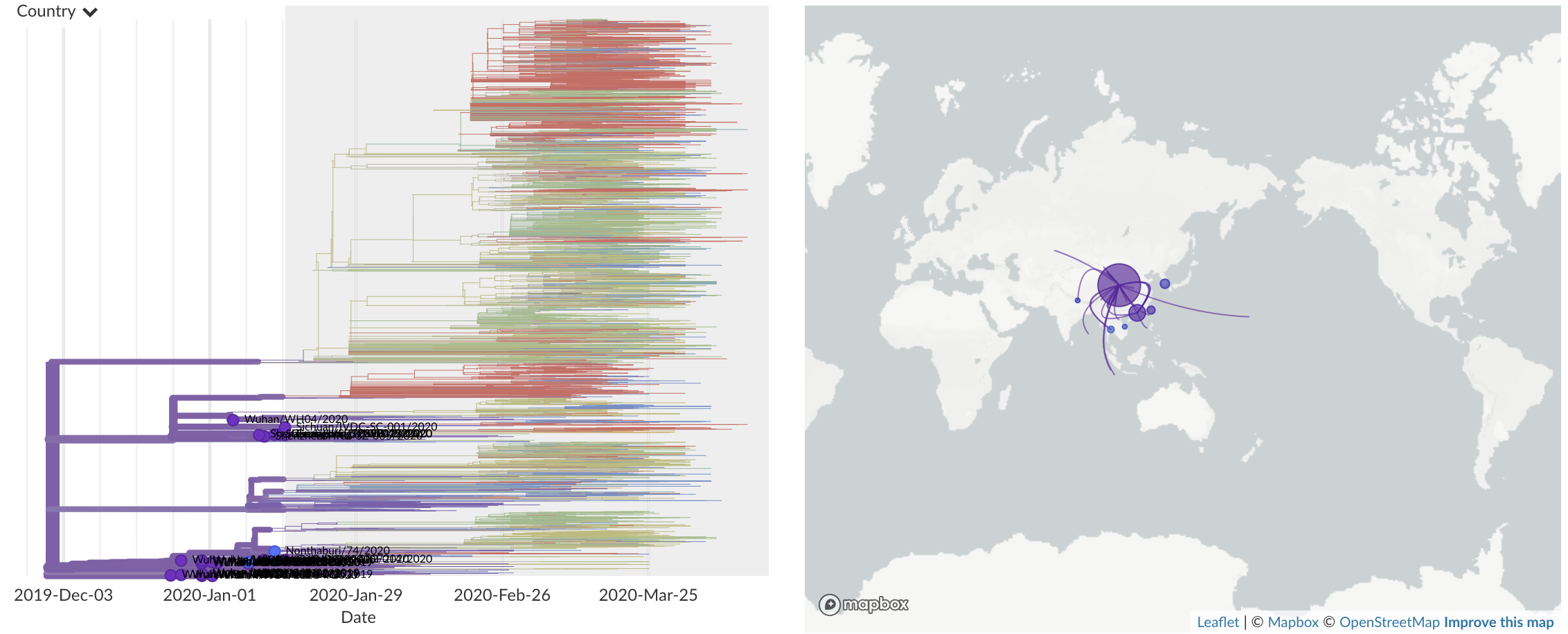
Jan/Feb: Spread within China and seeding elsewhere
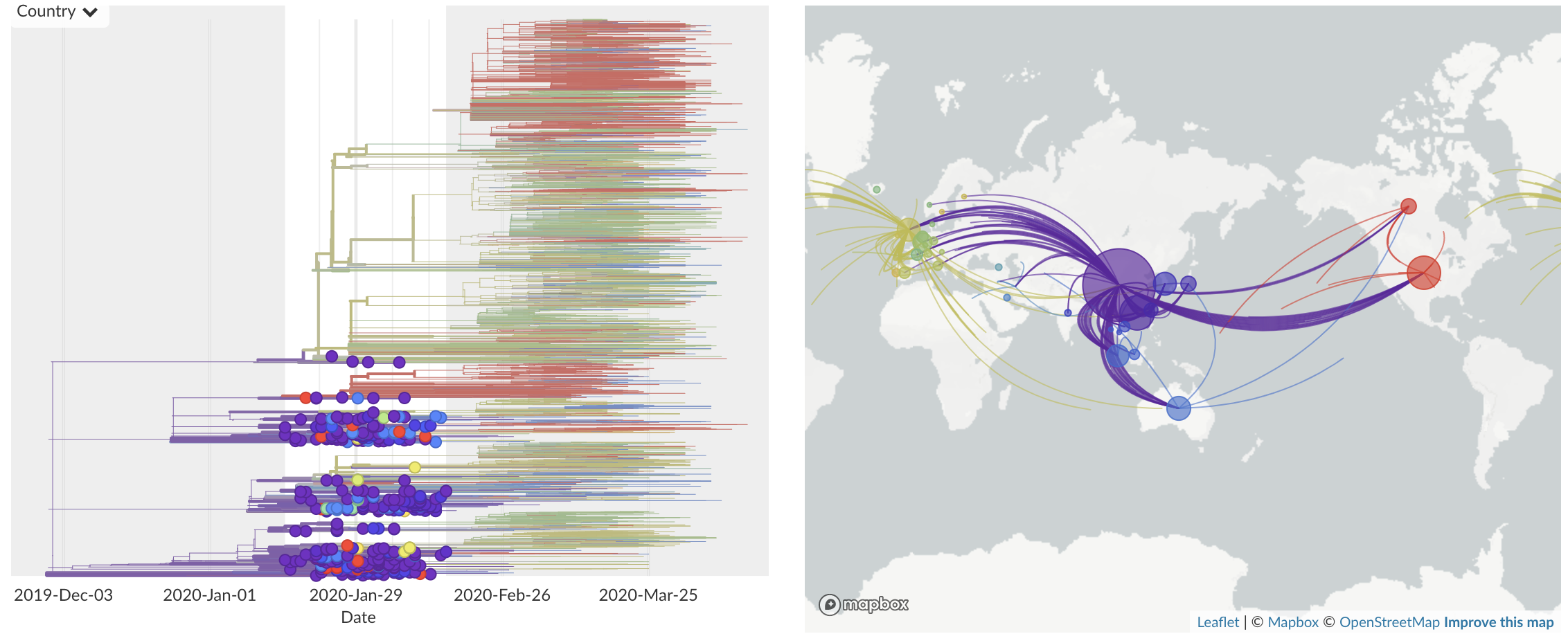
Feb/Mar: Epidemic spread within North America and Europe
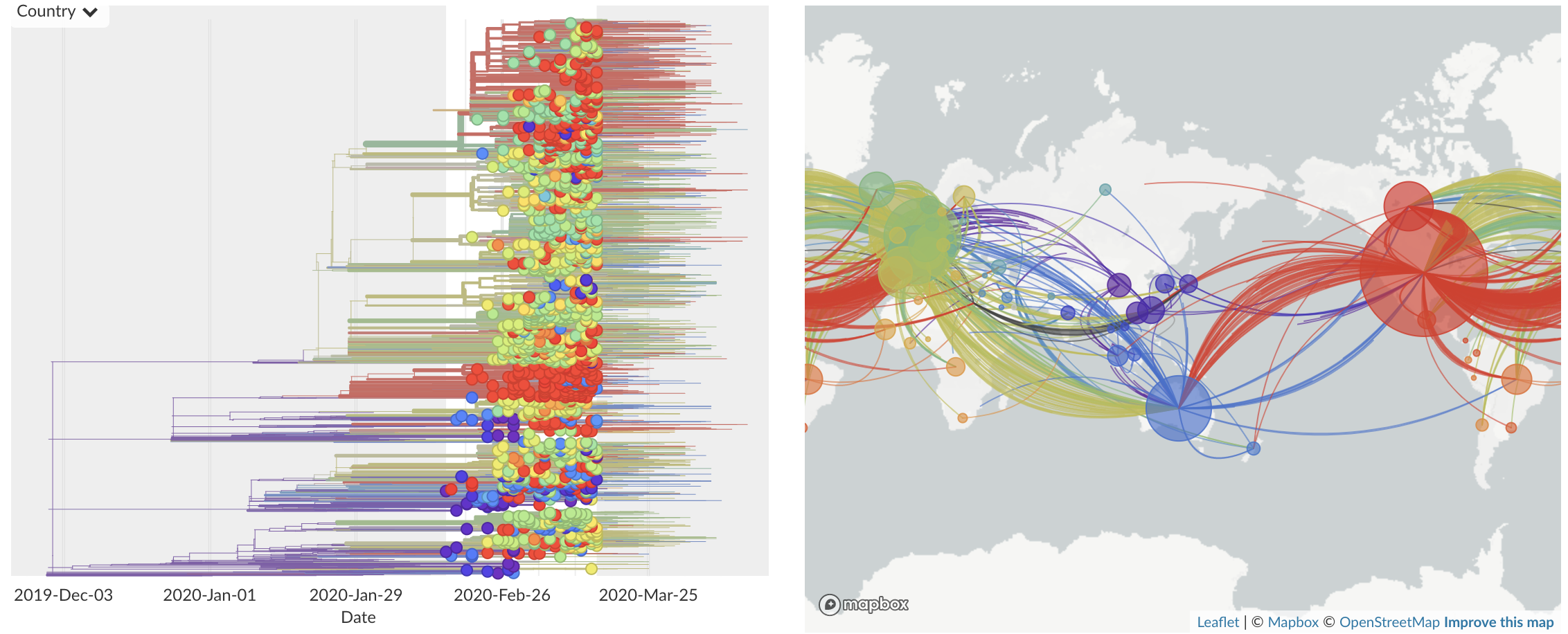
Mar/Apr: Continued growth, but decreasing transmission with social distancing measuress
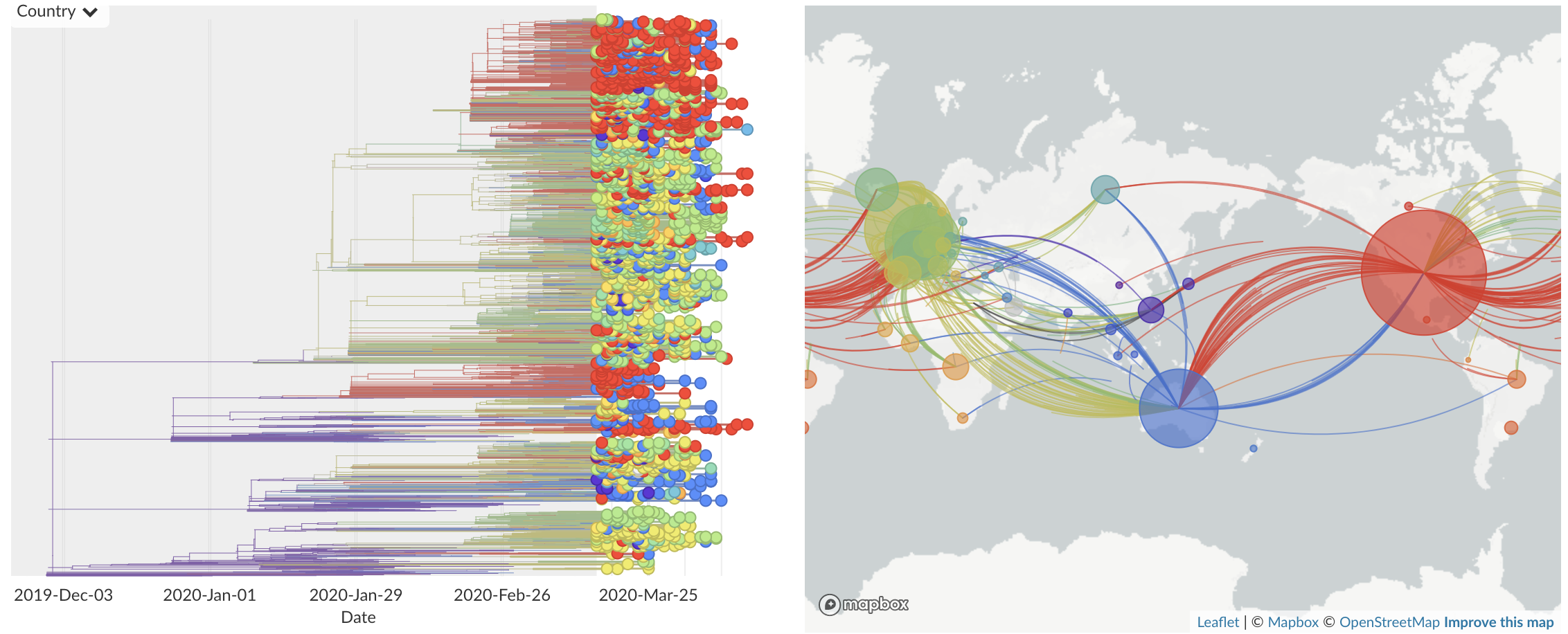
Epidemic in the USA was introduced from China in late Jan and from Europe during Feb
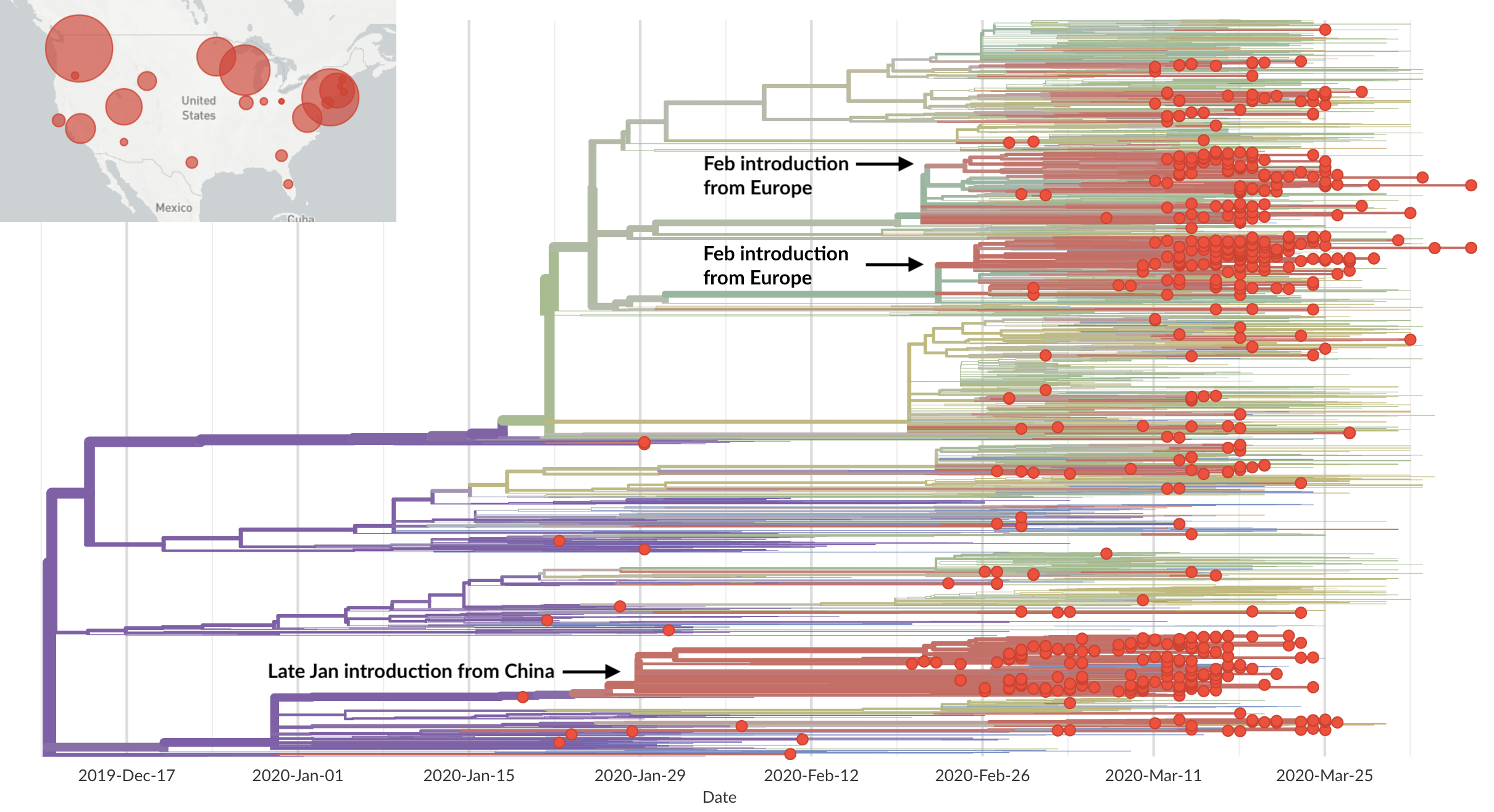
Once in the US, virus spread rapidly
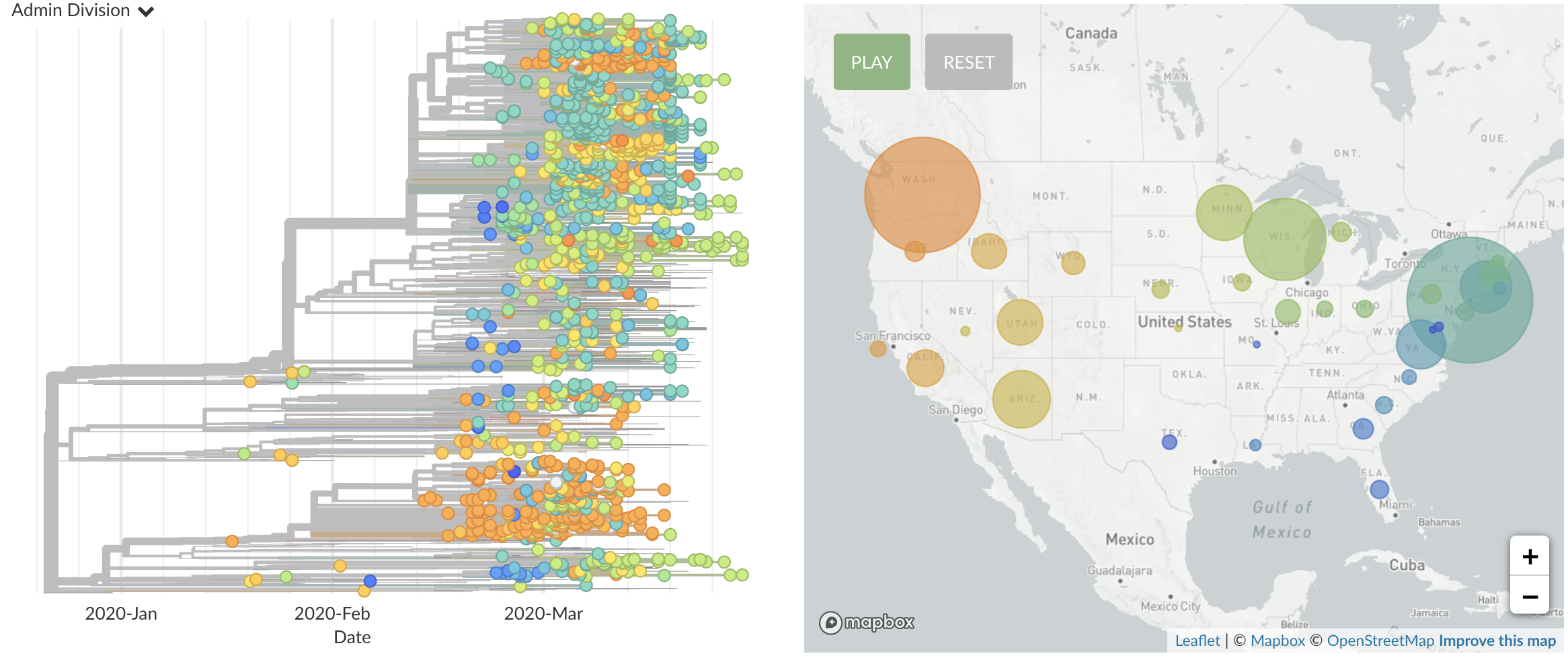
With social distancing we've seen substantial drops in transmission

My numbers
- Current plateau at ~30,000 cases reported per day with ~780k total confirmed cases reported
- With 10-20X underreporting, this is likely 300k to 600k infections per day and between 7.8M and 15.6M total infections
- NYC may have 30% seropositivity at this point, I'd guess ~3-5% for Seattle
- Herd immunity likely requires at least 66% recovered
- Infection-to-fatality ratio in general population of 0.5% to 1.0%, much of which has yet to be realized in the currently ill
Moving forward
- Suppression has failed
- Recommend strategies to mitigate spread while keeping economy functioning
- Scalable case-based interventions (testing, contact tracing and isolation)
- Non-disruptive distancing and hygiene
- Personal immune status
Acknowledgements
Data producers from all over the world, GISAID, Virological.org and the Nextstrain team





